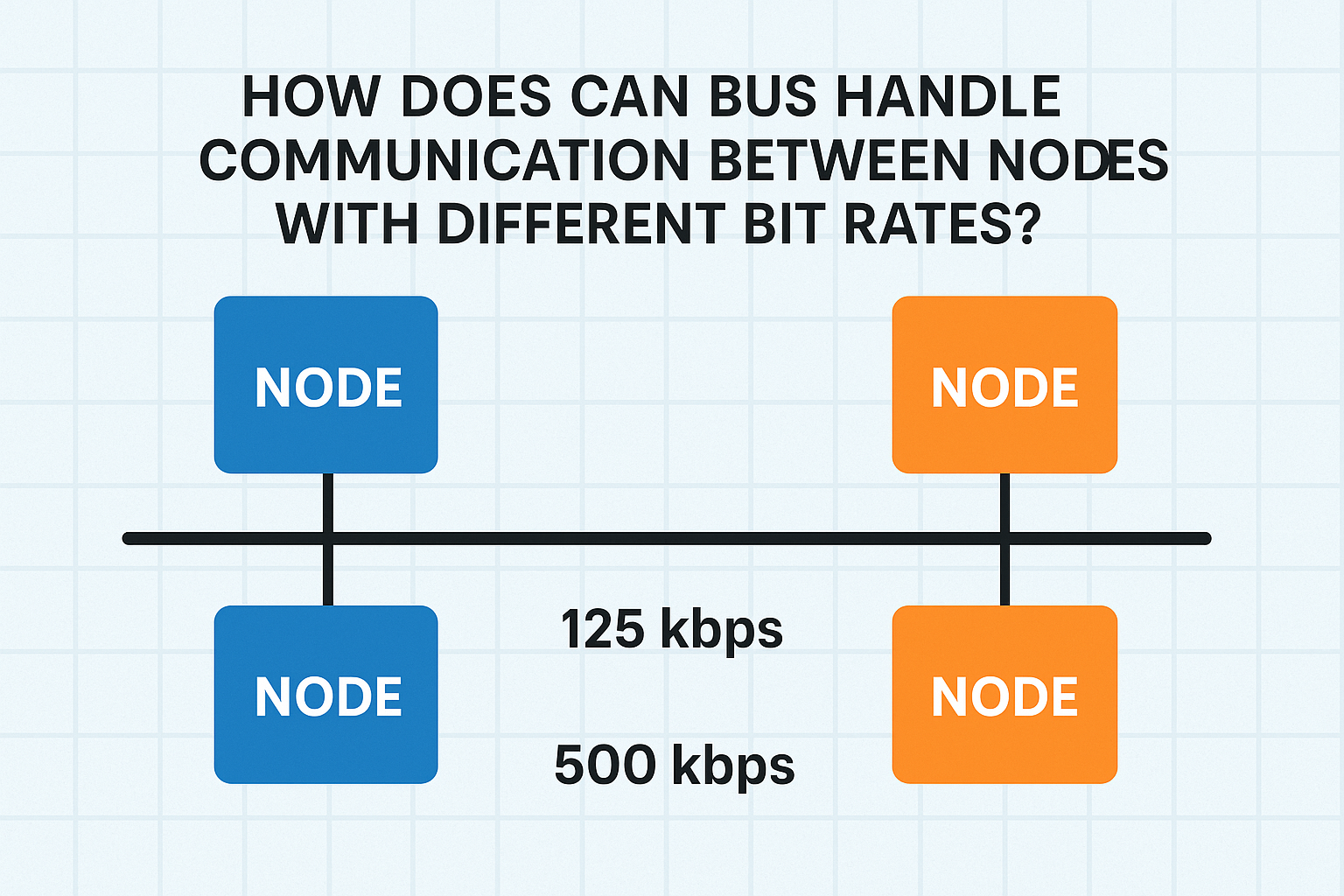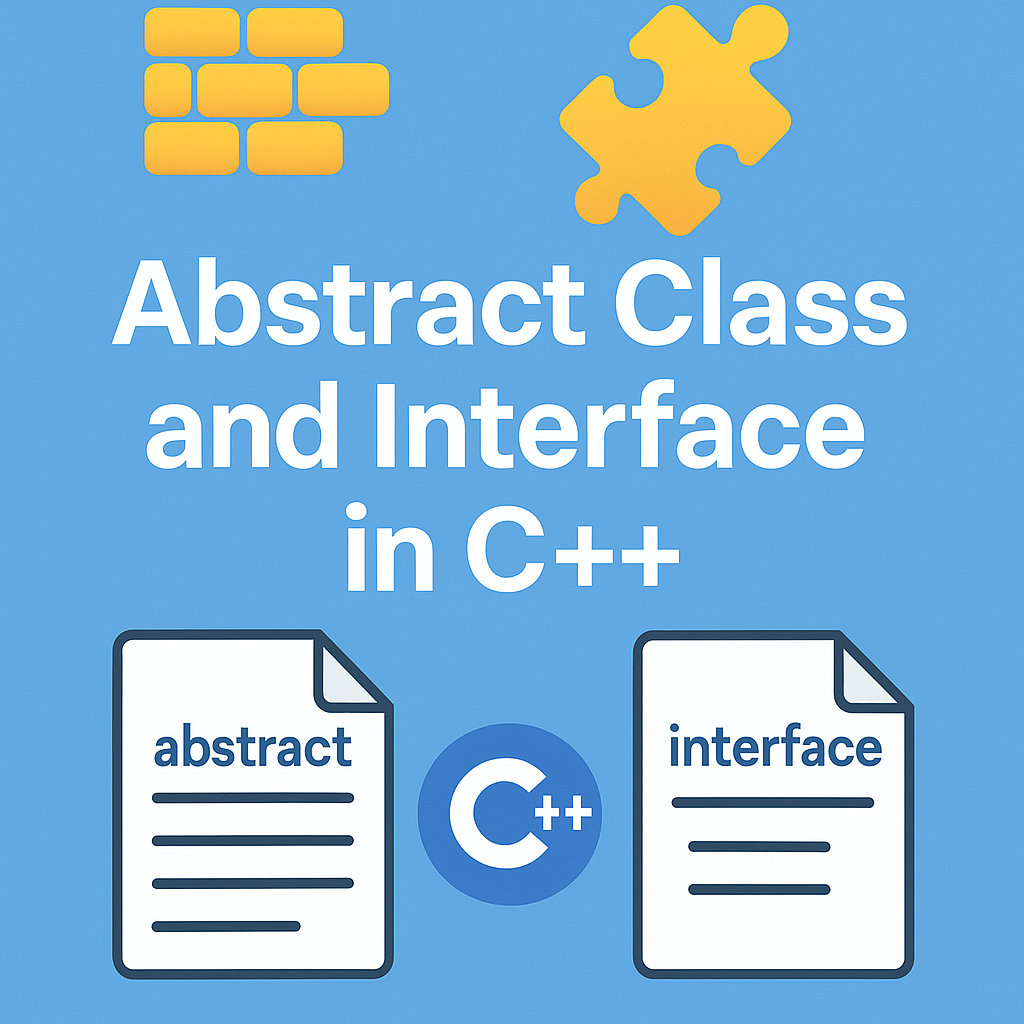CAN bus communication between nodes with different bit rates : In embedded systems, especially in the automotive and industrial sectors, CAN (Controller Area Network) bus plays a crucial role in enabling reliable communication between various microcontrollers and devices. But what happens when devices (called nodes) connected to the same CAN bus operate at different bit rates?
Let’s understand CAN Bus Communication Between Nodes With Different Bit Rates in a beginner-friendly way.
CAN Bus Communication Between Nodes With Different Bit Rates: Beginner’s Guide
What is Bit Rate in CAN Bus?
Bit rate refers to the speed at which data is transmitted on the CAN bus, typically measured in kbps (kilobits per second) or Mbps (megabits per second). Common CAN bit rates include 125 kbps, 500 kbps, and 1 Mbps.
In a CAN network, all nodes must communicate at the same bit rate. This is because CAN uses synchronous communication, meaning that the timing of the bits must be precisely aligned for all nodes to correctly interpret messages.
Can Nodes with Different Bit Rates Communicate?
Short answer: No, standard CAN bus does not support communication between nodes with different bit rates on the same physical network.
This is because:
- Each CAN node samples the bits on the bus at the same time intervals.
- If one node transmits faster (e.g., at 1 Mbps) and another listens slower (e.g., at 125 kbps), the slower node won’t be able to interpret the faster data.
- This mismatch causes bus errors, bit stuffing errors, and data corruption.
Then, How to Handle Different Bit Rates?
Even though nodes with different bit rates cannot communicate directly on the same CAN network, there are practical ways to enable communication across such nodes.
1. Use CAN Gateway or CAN Bridge
A CAN gateway or CAN bridge is a device with multiple CAN controllers, each configured to a different bit rate.
- It receives data from one network, buffers it, and then transmits it to the other network at a compatible bit rate.
- This acts as a translator between networks operating at different speeds.
✅ Example: One CAN network runs at 1 Mbps for high-speed ECUs, and another runs at 125 kbps for low-speed sensors. A CAN gateway connects them seamlessly.
2. Segregate Networks Physically
If you have nodes with different bit rate requirements, it’s best to physically separate them into different CAN segments.
- Each segment operates independently at its own speed.
- Gateways or microcontrollers act as intermediaries for data transfer.
CAN FD: A Special Case
With the introduction of CAN FD (Flexible Data Rate), there’s a twist.
- In CAN FD, all nodes start communication at a nominal bit rate (like 500 kbps).
- But during the data phase, the network can switch to a faster bit rate (like 2 Mbps), if all nodes support it.
However, this still requires agreement beforehand—nodes must support CAN FD and be configured to understand the switching.
🚫 So even with CAN FD, mismatched bit rates without coordination won’t work.
Best Practices to Avoid Bit Rate Mismatches
- ✅ Always configure all nodes on the same CAN bus to use the same bit rate.
- ✅ Use tools like oscilloscopes or CAN analyzers to verify bit timings.
- ✅ Deploy CAN bridges if integration between different bit rate networks is required.
- ✅ Avoid connecting low-speed legacy nodes directly into a high-speed CAN network.
Final Thoughts
To summarize, CAN bus communication between nodes with different bit rates is not natively supported. All nodes in a CAN network must share the same bit rate to communicate reliably. However, using CAN gateways or separating networks can help integrate systems with different communication speeds.
Understanding this helps you design robust embedded systems without hidden communication bugs.
FAQ – CAN Bus Bit Rate Compatibility
Q1: Can I connect a 125 kbps node to a 500 kbps CAN network?
Ans: No. This will cause communication errors unless you use a CAN gateway.
Q2: What happens if nodes on the same CAN bus have different bit rates?
Ans: The network will experience bus errors, and communication will fail.
Q3: Does CAN FD allow multiple bit rates?
Ans: Yes, but only in the data phase and all nodes must support CAN FD and the same data phase bit rate.
Q4: How to solve the problem of different bit rates in a project?
Ans: Use a CAN bridge or isolate CAN networks based on speed and connect them through a central controller.
You can also Visit other tutorials of Embedded Prep
- Multithreading in C++
- Multithreading Interview Questions
- Multithreading in Operating System
- Multithreading in Java
- POSIX Threads pthread Beginner’s Guide in C/C++
- Speed Up Code using Multithreading
- Limitations of Multithreading
- Common Issues in Multithreading
- Multithreading Program with One Thread for Addition and One for Multiplication
- Advantage of Multithreading
- Disadvantages of Multithreading
- Applications of Multithreading: How Multithreading Makes Modern Software Faster and Smarter”
Mr. Raj Kumar is a highly experienced Technical Content Engineer with 7 years of dedicated expertise in the intricate field of embedded systems. At Embedded Prep, Raj is at the forefront of creating and curating high-quality technical content designed to educate and empower aspiring and seasoned professionals in the embedded domain.
Throughout his career, Raj has honed a unique skill set that bridges the gap between deep technical understanding and effective communication. His work encompasses a wide range of educational materials, including in-depth tutorials, practical guides, course modules, and insightful articles focused on embedded hardware and software solutions. He possesses a strong grasp of embedded architectures, microcontrollers, real-time operating systems (RTOS), firmware development, and various communication protocols relevant to the embedded industry.
Raj is adept at collaborating closely with subject matter experts, engineers, and instructional designers to ensure the accuracy, completeness, and pedagogical effectiveness of the content. His meticulous attention to detail and commitment to clarity are instrumental in transforming complex embedded concepts into easily digestible and engaging learning experiences. At Embedded Prep, he plays a crucial role in building a robust knowledge base that helps learners master the complexities of embedded technologies.



Leave a Reply